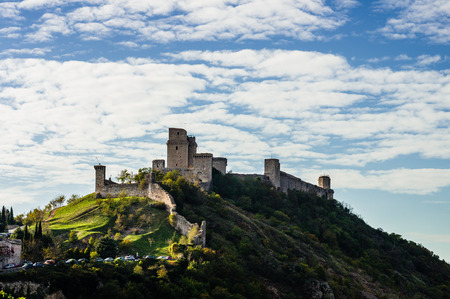Introduction: Enchanted by Stone and Story
Stepping onto the rolling hills and patchwork fields of England, it’s impossible to ignore the silent sentinels that punctuate the landscape—medieval strongholds rising from mist and memory. These castles and battlefields, built in times when stone was as much a weapon as a shield, evoke a deep sense of wonder. This journey invites you to traverse the length and breadth of England, following in the footsteps of knights, kings, and commoners alike, whose lives were shaped within these mighty walls. With every weathered battlement and ancient earthwork, we encounter not just relics of conflict but enduring symbols of British heritage—places where history breathes and legends linger. Here, we set the scene for an exploration into their lasting legacy, mystique, and continued relevance in the heart of modern Britain.
2. Castles on the Frontier: Defending a Kingdom
England’s medieval landscape is punctuated by formidable strongholds, each with its own tale of siege and survival. From the towering white cliffs of Dover Castle in the south to the windswept ramparts of Bamburgh Castle in the north, these fortifications were more than mere residences; they were strategic linchpins in the defence of the realm. Their placement was never arbitrary—each one guarded vital trade routes, river crossings, or vulnerable borders, acting as both deterrents to invaders and symbols of royal authority.
The following table provides an at-a-glance overview of several iconic English siege castles and their defining features:
Castle |
Location |
Strategic Importance |
Notable Sieges/Battles |
|---|---|---|---|
| Dover Castle | Kent (South-East) | Guardian of England’s gateway; key Channel crossing point. | Siege of 1216 during the First Barons War |
| Bamburgh Castle | Northumberland (North-East coast) | Stronghold against Scottish incursions; coastal lookout. | Civil War sieges, especially 1464 (Wars of the Roses) |
| Kenilworth Castle | Warwickshire (Midlands) | Central England strongpoint; royal power base. | Longest siege in English history (1266, Second Barons’ War) |
| Corfe Castle | Dorset (South-West) | Control over Purbeck; defence against coastal threats. | Sacked during the English Civil War (1645) |
| Tower of London | London (Thames River) | Seat of royal authority; control over capital and river access. | Sustained multiple uprisings and power struggles throughout history |
These castles were not only military assets but also administrative centres and symbols that projected the king’s will far beyond their stone walls. Their architecture evolved with advances in siege technology—from wooden motte-and-bailey structures to imposing concentric stone fortifications. In times of conflict, such as the Norman Conquest, Anarchy, or the Wars of the Roses, these bastions played pivotal roles, often deciding the fate of dynasties and shaping England’s historical trajectory. Today, they stand as enduring testaments to centuries-old strategies and shifting frontiers, inviting modern visitors to walk in the footsteps of defenders, besiegers, and monarchs alike.
![]()
3. Architectural Innovations: Crafting Impregnable Walls
Delving into the engineering ingenuity of England’s medieval strongholds reveals a fascinating blend of practicality and artistry, with a distinctly British flair for defensive design. The evolution of castle architecture was driven by the ever-present threat of siege warfare, prompting lords and builders to continually refine their fortifications. At the heart of these innovations were moats—broad, water-filled ditches that encircled many English castles, such as Leeds Castle in Kent or Bodiam Castle in East Sussex. These watery barriers not only impeded would-be attackers but also served as an impressive status symbol, reflecting the power and prestige of their owners.
Perhaps most iconic is the keep, or ‘donjon’, rising at the centre of so many English castles. These massive stone towers, like those found at Rochester and Dover, combined residence with last-resort refuge. Their thick walls, narrow arrow slits, and spiral staircases (usually designed to favour right-handed defenders) are hallmarks of British medieval engineering. Keeps evolved from simple motte-and-bailey timber structures into formidable stone citadels—an unmistakable symbol of Norman influence on English soil.
Curtain walls formed another critical layer of defence. These high, robust barriers connected the various elements of a castle, often punctuated by drum towers and fortified gateways like those at Warwick and Alnwick. The addition of crenellations (the classic battlements), machicolations for dropping missiles, and murder holes above entrances illustrated a relentless commitment to both deterrence and active defence.
Distinctively British approaches included the concentric design—walls within walls—that became popular after Crusader influence filtered back from the continent. Beaumaris Castle in Anglesey is perhaps the finest example of this style: its perfectly symmetrical layout demonstrates a keen understanding of geometry and military strategy. Even within these grand designs, local materials such as limestone or sandstone were used whenever possible, rooting each stronghold firmly in its landscape.
This drive for impregnable defences was not just about brute strength; it was also about psychological warfare. The mere sight of a towering keep or an unassailable curtain wall sent a clear message to friend and foe alike: here stood a power that could weather any storm. Today, exploring these architectural marvels offers a tangible connection to the minds that engineered them—testament to Britain’s enduring legacy of defensive brilliance.
4. Siege Warfare: Tales of Turmoil and Triumph
The story of England’s medieval strongholds is inseparable from the legendary sieges and epic battles that shaped their history. These fortresses became crucibles where courage, strategy, and sheer willpower were tested against the relentless tide of conflict. To truly appreciate these sites, one must consider not only the stone walls and battlements but also the human drama that unfolded within and around them.
The Drama of Medieval Sieges
Throughout the Middle Ages, castles like Dover, Kenilworth, and Bamburgh were not mere residences—they were lifelines in times of war. Siege warfare was a grueling test of endurance for both attackers and defenders. The defending garrison faced starvation, disease, and the constant threat of assault, while besiegers employed ingenious machines—trebuchets, battering rams, and siege towers—to break through formidable defences.
Famous Sieges on English Soil
| Castle | Year | Main Conflict | Notable Event |
|---|---|---|---|
| Dover Castle | 1216 | First Barons War | Held out against Prince Louis of France; tunnels used for defence. |
| Kenilworth Castle | 1266 | Second Barons War | The longest siege in English history (six months). |
| Bamburgh Castle | 1464 | Wars of the Roses | The first English castle to fall to artillery bombardment. |
| Ponteland Castle | 1388 | Anglo-Scottish Wars | Sacked by Scottish raiders during the Battle of Otterburn. |
Tales of Bravery and Ingenuity
The annals of these sieges are rich with stories of remarkable resilience. During the siege of Kenilworth in 1266, defenders withstood starvation and constant attack by using secret wells and hidden supplies. At Dover, defenders dug tunnels under enemy lines to launch surprise counter-attacks—a testament to British ingenuity in the face of adversity. These episodes have become part of local folklore, embodying the grit and stubbornness often associated with English character.
The Battlefield Legends Endure
Even today, visitors walking these historic grounds can sense echoes of turmoil and triumph. Guided tours frequently recount daring escapes, heroic last stands, and moments when fate hung by a thread. Such stories not only bring history to life but also serve as a reminder that England’s heritage is built upon both stone and spirit—a legacy shaped as much by ordinary men and women as by kings and commanders.
5. Everyday Life Behind the Battlements
Life within the thick stone walls of England’s medieval strongholds was a study in contrasts: privilege and hardship, splendour and siege, all woven into the daily existence of their inhabitants.
Lords and Ladies: Nobility Under Duress
For the castle’s ruling family, life was far from idle luxury. Lords managed vast estates from their great halls, overseeing justice, diplomacy, and defence. Ladies, meanwhile, orchestrated the household with military precision, ensuring supplies were stockpiled for sieges and running the kitchens that fed hundreds. Yet, even as they hosted feasts or held courtly entertainments, the ever-present threat of conflict meant that every event was shadowed by caution.
The Garrison: Soldiers in Readiness
Beneath the banners of their liege lord, soldiers formed the backbone of any stronghold’s defence. Their days were regimented—drilling on the bailey green, maintaining armour and weaponry, and manning lookout posts atop windswept battlements. During times of siege, these men became both defenders and labourers, reinforcing walls, repairing damage from trebuchet strikes, and rationing dwindling food stores.
Servants and Tradesfolk: The Unsung Majority
The heartbeat of castle life came from its servants and craftspeople—cooks tending massive hearths, blacksmiths shaping arrowheads, washerwomen scrubbing linen, and stable hands caring for destriers. Living quarters were cramped and often cold; yet these workers adapted ingeniously to the rhythms of castle routine and crisis alike.
Adapting to Uncertainty
From noble to commoner, everyone behind the battlements learned to adapt to uncertainty. Moats were checked for sabotage; granaries inventoried with anxious regularity. Children learned early how to spot distant banners or listen for danger in the wind. Even in peacetime, drills prepared all for sudden alarms.
A Community Forged by Adversity
While English siege castles stand today as monuments to warfare, they were also vibrant communities where resilience was key. The routines developed under constant threat fostered ingenuity—a testament not only to military might but also to the enduring spirit of those who called these fortresses home.
6. Modern Encounters: Preserving and Experiencing History
Across England, medieval strongholds are more than weathered relics—they are vibrant witnesses to the nation’s story, and their preservation is a testament to the value placed on cultural heritage. Today, organisations such as English Heritage and The National Trust spearhead efforts to conserve these formidable sites. Restoration projects meticulously stabilise crumbling masonry, while careful landscaping ensures that surrounding battlefields retain their historic contours. These endeavours, though technical, are fuelled by a genuine desire to maintain authenticity for future generations.
Visiting a siege castle or battlefield is now an immersive experience. Interpretation centres blend archaeological finds with digital reconstructions, enabling visitors to visualise bygone sieges or the thunder of armoured knights across muddy fields. Guided tours led by passionate historians paint vivid scenes, often incorporating local folklore and regional dialects that root each site firmly in its unique landscape. In many locations, living history events invite families to witness re-enactments—complete with clashing swords and booming trebuchets—bringing the past roaring back to life.
The ongoing commitment to education is equally apparent. Many castles host workshops for schoolchildren, fostering a tangible connection to history through hands-on activities like archery or medieval cookery. This approach not only preserves historical knowledge but also instils pride in local identity—a cornerstone of British cultural continuity.
Efforts to protect these sites have also sparked community involvement. Volunteer groups assist with maintenance and visitor engagement, while local councils collaborate on sensitive development plans that respect ancient boundaries. The result is a network of strongholds that serve as both community hubs and national treasures.
For travellers trekking across England’s medieval landscapes, each visit becomes a layered encounter: architectural wonder, historical exploration, and participation in an ongoing dialogue between past and present. The continued stewardship of England’s siege castles and battlefields ensures they remain not just monuments to conflict but enduring symbols of resilience woven into the fabric of British life.

